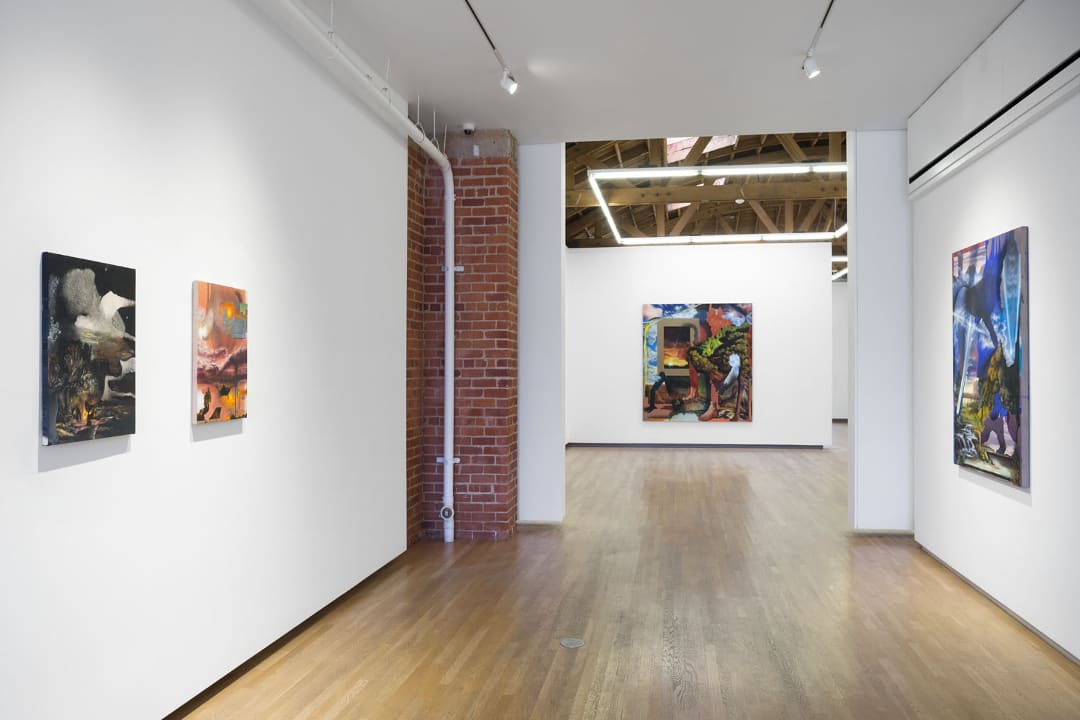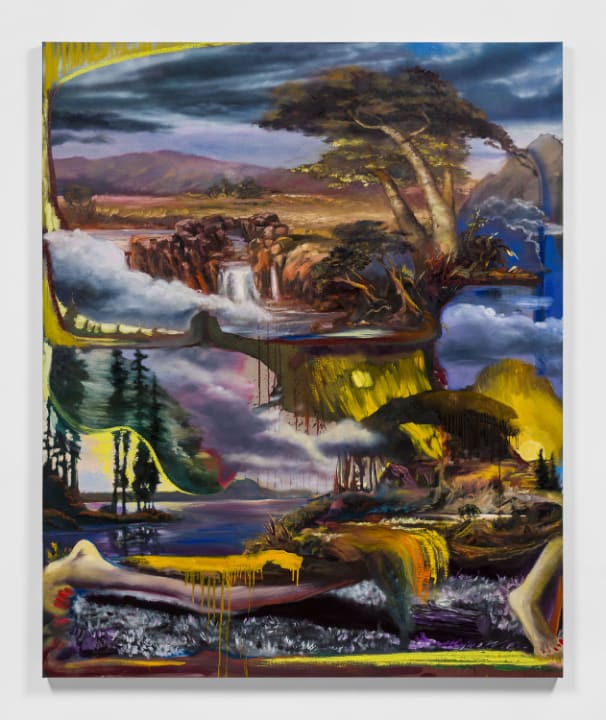
The hindquarters of a half-blue blue horse disappear into or perhaps emerge from within a gestural cloud of pigment billowing across a pastoral landscape; it is not drinking from the water to which it has been led. A latter-day, interfered with Fragonard, a compressed Corot, an accumulative Postmodern array of informational diversity and discretion. For all its compositional obfuscations, pictorial false flags, striated culs-de-sac, and trompe l’oeil winks, Tight Tied Tide (acrylic, oil, oil stick on linen, 2022) and indeed all the work in Annie Lapin’s enthusiastically busy current solo exhibition at Shulamit Nazarian are exceptionally clear in intention. That is: to replicate the cognitive position of a mind seeking pattern and order in the chaos of post-internet image overload.

Annie Lapin: Contours of the Vast, Shulamit Nazarian, Los Angeles, November 13–December 17, 2022.
In certain works — such as the frame-within-frame structure of Veil and Seers and Flashlit CTP — the dynamic of nested realities slouching through the doors of perception is made explicit; the recombinant strings of experience, memory, art history, imagination, observation, and pure form are arranged to signal the process being explored. The works begin with poured pigment and liquid graphite, creating primordial pools from which, evolution-like, first marks and then more familiar forms take shape. Despite the tumult of changing optical keys and shifting spatial grounds, Lapin’s frozen geomorphology captures and expresses a cognitive dynamic that engages the brain and the body in the self-solving mystery.
Annie Lapin, Pose (States of Water), 2022. Acrylic, oil and oil stick on linen, 72 x 59 in.
In Pose, States of Water and other such layered and stacked landscape arrangements, the juxtapositional spaces teeter like a cross-section of parallel universes. Often, a bit of body, especially a foot and leg, anchor the entire affair in the lower right like the leg of a table or a temple caryatid — both anchoring the composition in its own physical stability, and asserting the humanity of the viewer themselves in its architectural orientation. Splotchy explosions and smoother billows of pure color do more than one job as well — obscuring some aspects of the picture, highlighting and interconnecting others, and honoring the role of emotion and intuition in the brave new global comprehension challenge.
“My practice imagines a painting not as a representation of a place or thing,” writes Lapin, “but rather an image of our longing to understand our world.” The overall effect is one of those almost tautological circles — akin to the whole “know what we know, know what we don’t know, don’t know what we don’t know, and sometimes don’t know what we do know” game — in which although in Lapin’s paintings we might not know what we’re looking at, we know exactly what we’re seeing.


